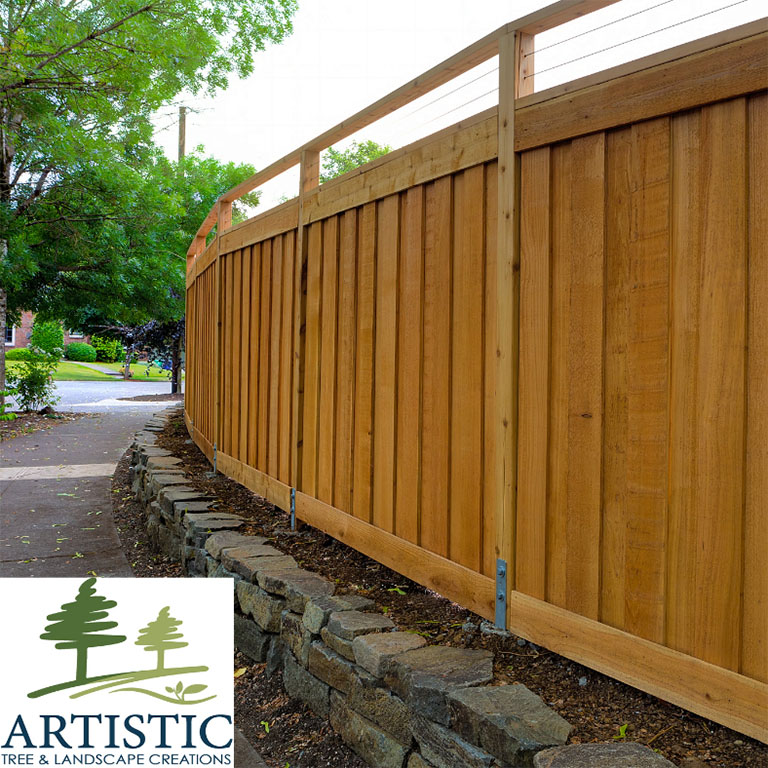All Categories
Featured
Fences supply many advantages for house owners, including personal privacy, safety, and enhancing curb appeal. Nevertheless, even one of the most well-constructed fencings won't last for life. Over time, direct exposure to weather, parasites, and natural wear can cause a fence to wear away. While some problems can be repaired, others may require full substitute to bring back the capability and look of your residential or commercial property. Here are numerous vital signs that your fence may require to be replaced.
![]()
![]()
![]()
Conclusion. Whether it's via physical damages, bug infestations, rot, or just the natural progression of time, identifying the indications that your fence requires to be replaced can aid you make an enlightened decision about when to take action. By replacing your fence at the right time, you can ensure that your residential or commercial property continues to be protected, aesthetically appealing, and practical for years to come.
- Significant Physical Damage. Physical damage to a fencing can be caused by numerous aspects, including severe weather, dropped trees, or accidents. If multiple panels are broken, or the blog posts are totally jeopardized, the fence will certainly no longer offer its key objective of providing safety and security and personal privacy.

- Decaying and Degeneration. Over time, the rot can spread throughout the fence, weakening its architectural stability. While local areas of degeneration might be fixed, if the rot is prevalent, changing the fencing is usually the finest alternative.
- Leaning or Tilting. A leaning fence is a clear indicator that the blog posts may have been damaged or that the dirt around the articles has actually shifted. If the leaning is severe, or if efforts to straighten the posts have not worked, replacing the afflicted sections or the whole fence might be needed to keep protection and security.
- Pest Invasion. Bugs such as ants, termites, and rats can trigger serious damages to wood fences. In many instances, pest invasions can deteriorate the fence to the factor where repair services will certainly not be enough, and replacement might be required.

- Corrosion or Corrosion (For Steel Fencings) Metal fences, consisting of chain-link, aluminum, and functioned iron, are vulnerable to corrosion and deterioration, specifically in locations with high moisture or salt exposure. Gradually, rust can consume away at the metal, deteriorating the structure and causing the fence to come to be unpredictable. If the corrosion is comprehensive and affecting the stability of the fencing, repair services might not suffice. In this situation, replacing the steel sections or the whole fence is the most effective service.
- Discoloring or Discoloration (For Plastic Fences) Plastic fencings are a preferred option due to their low maintenance and durability. If the fence is showing indications of significant fading, particularly if it impacts the general look of your building, changing it with a new plastic fencing or a various product might boost both aesthetics and performance.
- The Fence is Outdated or No More Satisfies Your Demands. Occasionally, the demand to change a fence isn't because of damages, yet since it no more fits your demands or the design of your home. If your fence is dated, does not give sufficient privacy, or no more offers the degree of safety and security you require, it might be time for an upgrade. Additionally, if your initial fencing was built for a specific objective, such as maintaining pet dogs in, and now you require an even more strong obstacle for privacy or security, a substitute will make sure the fence serves your present needs.

- Regular Repair Costs. If you find yourself continually repairing sections of your fence, it may be a lot more affordable to change the whole structure instead of constantly covering it up. Regular repairs can accumulate with time, and a fence that requires consistent focus might not be offering the protection and performance you require. A brand-new fencing can save you money in the future by minimizing ongoing maintenance costs.
- Fence No Longer Gives Personal Privacy or Safety. The primary objectives of many fencings are to supply personal privacy and safety. If your fencing is no much longer offering these objectives-- whether because of voids, deteriorated framework, or just an outdated design-- it might require to be changed. A fencing that doesn't offer ample privacy can leave your residential or commercial property exposed, while a fencing that's no longer protect can compromise the security of your home.
- The Fencing is Near the End of Its Life expectancy. If your fencing is approaching or exceeding this age and reveals several indications of wear, it's a great idea to begin preparing for a replacement. Even if the fencing appears to be in decent condition, an old fence may be extra prone to damages, and replacing it proactively can conserve you from dealing with unanticipated concerns down the roadway.
Conclusion. Whether it's via physical damages, bug infestations, rot, or just the natural progression of time, identifying the indications that your fence requires to be replaced can aid you make an enlightened decision about when to take action. By replacing your fence at the right time, you can ensure that your residential or commercial property continues to be protected, aesthetically appealing, and practical for years to come.
Latest Posts
Comprehensive Auto Services at Montclare Auto Repair - Learn More
Published Apr 21, 25
2 min read
Looking for a Mechanic Shop Locally? Choose Car-X St. Louis for Professional Service
Published Apr 21, 25
1 min read
Constructing a Strong Economic Future with WyHy
Published Apr 21, 25
1 min read
More
Latest Posts
Comprehensive Auto Services at Montclare Auto Repair - Learn More
Published Apr 21, 25
2 min read
Looking for a Mechanic Shop Locally? Choose Car-X St. Louis for Professional Service
Published Apr 21, 25
1 min read
Constructing a Strong Economic Future with WyHy
Published Apr 21, 25
1 min read